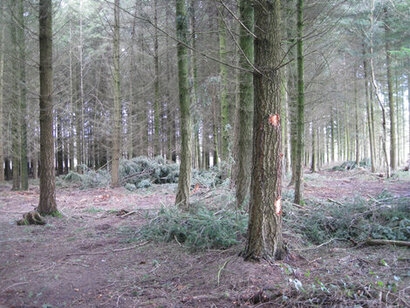
A common tactic is to associate the use of woody biomass for energy with overexploitation of forests, even permanent deforestation, and "the burning of trees". In reality, forest bioenergy is an integral part of the forest sector which responds to bioenergy demand by devising forest management approaches and industrial processes to produce fuels, heat and electricity along with sawlogs, paper and a multitude of other biobased products.
These media campaigns also often ignore the many steps that have already been taken towards sustainable forest management, particularly in Europe and North America.
While it is certainly important to identify what is needed to ensure that biomass is produced and used in a responsible way, the misrepresentations within recent soundbites run the risk of discrediting biomass as a sustainable material and energy source altogether – a feat that could have dire consequences for global carbon neutrality ambitions.
Combustion is today the most frequent means of converting woody biomass into energy, particularly in the form of heat and/or power. This can lead some people to believe that companies and organisations in the biomass sector are “cutting down forest stands and burning the trees for energy”. These ideas are then picked up by some environmental pressure groups and media campaigns. From here they manifest in the mind of the common reader and also among scientists that are unfamiliar with on-the-ground forestry and bioenergy systems.
However the reality is very different!
Forests are generally managed to provide multiple forest products, such as sawnwood, paper, bioenergy and also other biobased products. The wood used for bioenergy is not high quality lumber, but typically comprises thinnings, low-quality wood, salvage wood, harvest logging residues, processing residues or wood waste. As a case in point, about 90 percent of global renewable industrial heat consumption is currently based on biomass, mainly in industries that can use their own biomass waste and residues, such as sawmills and the pulp and paper industry. By shifting from fossil fuels to biomass these industries can stop injecting fossil carbon into the atmosphere. Energy efficiency improvements and changes in industrial processes in addition enables them to produce fuels, heat and electricity for use elsewhere, e.g., for heating homes.
The Joint Research Centre of the European Commission found that about 50 percent of wood used for bioenergy in the EU is derived from secondary products, such as forest-based industry by-products and recovered post-consumer wood, 17 percent from treetops, branches and other residues, and 20 percent from stemwood - which is mostly coppice wood, small stem thinning wood and harvested stems of poor quality that cannot be used in sawmills or pulp and paper production.
Further, it is well-recognised that any harvesting of biomass – be it for bioenergy, construction material, paper, or other use – should occur within sustainability boundaries. This implies management and harvesting principles providing safeguards against overharvesting and maintaining ecological sustainability as well as cultural and recreational values. This is why in the past 30 years sustainable forest management schemes such as FSC or PEFC endorsed schemes have been developed and deployed. Hundreds of millions of hectares of forests globally are currently certified by FSC or PEFC. Many countries have adopted similar forest management principles in their national or regional forestry legislations. Moreover, in the European context - the focus of these media campaigns - the recast of the Renewable Energy Directive imposes further requirements to minimise the risk of using forest biomass derived from unsustainable practice.
It is critically important to recognise that CO2 from bioenergy use is part of the short-term carbon cycle. When a forest stand is harvested and some of the biomass is used for energy, the carbon that was previously taken up from the atmosphere during stand growth is emitted to the atmosphere, and new carbon is taken up again when the stand regrows. So as long as harvests do not exceed carbon uptake in the forest, it does not increase atmospheric CO2 concentrations.
In contrast, fossil fuel use causes a linear flow of carbon from geologic stores to the atmosphere. Just comparing CO2 emissions at the exhaust – as is sometimes done - misses this fundamental difference between biogenic and fossil carbon. What matters is whether increasing use of forest biomass for energy is part of a changing forest management paradigm that brings systematic decreases or increases in the amount of carbon stored in forests. If there is a decrease this diminishes the climate benefits of forest bioenergy. If there is an increase the climate benefit is enhanced.
The most important way to fight climate change is to transform energy and transport systems as soon as possible so that we can leave fossil carbon in the ground. Sustainable bioenergy is available now, and is compatible with existing energy infrastructure, enabling immediate substitution of coal, natural gas or petroleum fuels. Moreover, it can actually remove CO2 from the atmosphere when combined with carbon capture and storage of the CO2 associated with bioenergy use. Bioenergy can therefore play a significant role in supporting energy system transformation to achieve carbon neutrality.
The use of woody biomass to meet growing energy demand as well as its carbon neutrality goals should not be excluded because there may be risks of unsustainable practice. Rather, the focus should be on what practices, innovations, and policy regulations are required to ensure sustainable sourcing and efficient conversion to bioenergy and bioproducts.
For additional information:

